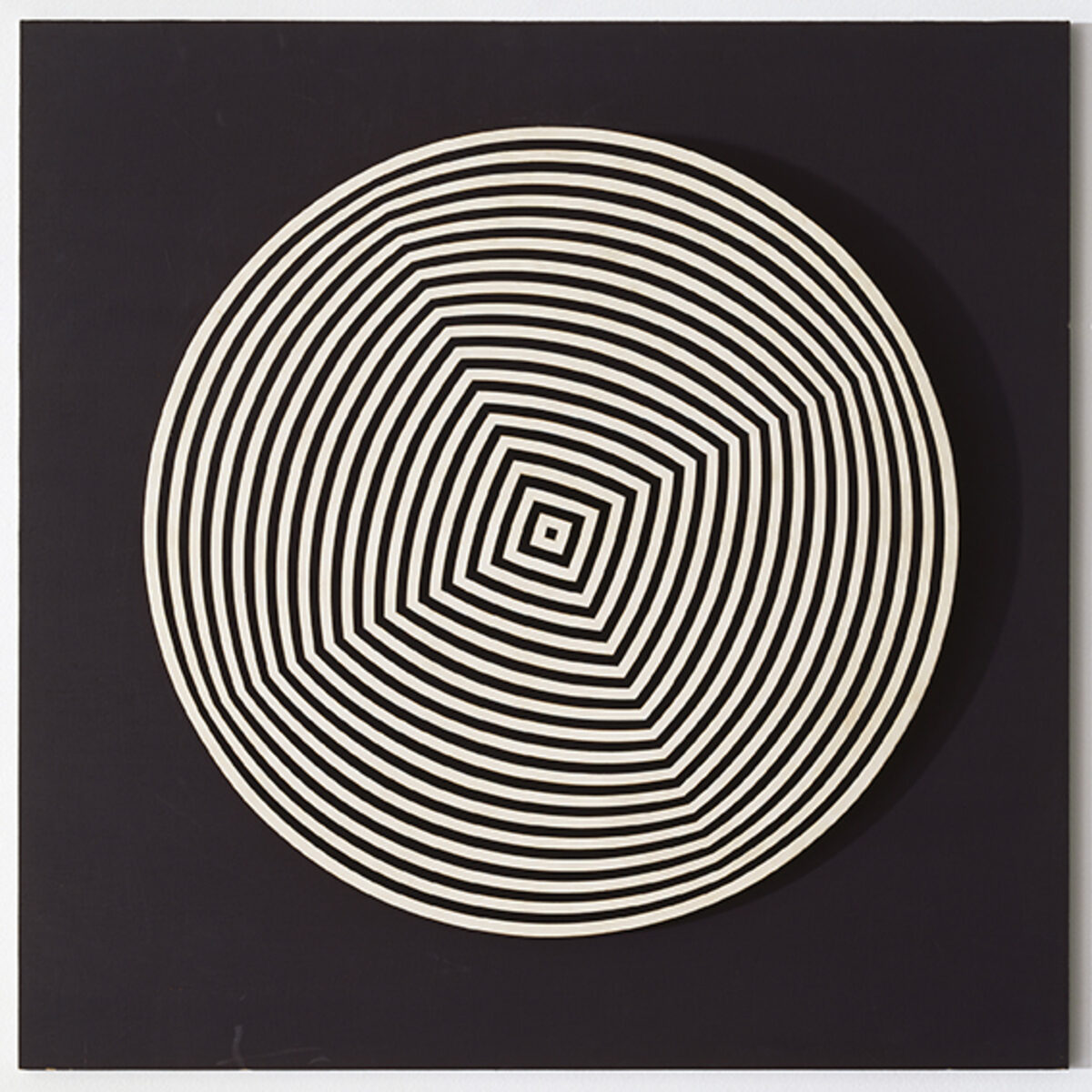Marina Apollonio
Marina Apollonio (born 1940 in Trieste, Italy), like the British artist Bridget Riley, was a pioneer of the male-dominated field of Op Art. She was also one of the few women artists to take part in the two monumental “Nove tendencije” exhibitions in Zagreb, Croatia, in the 1960s, where her works stood their ground next to those of fellow artists Gianni Colombo, François Morellet, and Otto Piene.
Apollonio is the daughter of the famous Italian art theorist Umbro Apollonio and developed her genuine artistic approach in a straightforward way. Soon after graduating from the Accademia di Belle Arti in Venice in 1960, she began to explore the mechanics of seeing and to create optical effects using basic geometric forms. Like most Op Art artists, she is driven by the idea of creating art that is objective and immediately accessible. She draws inspiration from mathematical principles as well as from the analysis of Eastern Asian symbols, such as yin and yang.
The circle has been her main focus from the beginning. In 1964, she began to explore the illusionistic potential of concentric and eccentric structures of black and white circles on a black background. At that time, she often painted or printed these forms on plates that can be manually rotated to increase the optical effects of motion and of flickering through the physical movement. Her work that is in the collection of Museum Haus Konstruktiv is an example of this central phase of her artistic practice.
In 1966, she began to make similar works in which she would occasionally add fluorescent colors with chromatic gradations, and she made kinetic sculptures out of steel. In the early 1970s, she experimented with white monochrome plates with circular reliefs whose edges she painted in fluorescent paint to create reflections of color on the white background. She then explored horizontal and vertical structures of lines for a brief period, after which her work was less talked about for a while. To this day, she remains faithful to her characteristic style of black and white compositions of circles, which are now often mechanically rotated. Most recently, she received much attention when she recreated her dizzying floor works that can be walked on from 1966 and 1967 for a major Op Art retrospective at the Schirn Kunsthalle in Frankfurt in 2007 and the Museo del Barrio in New York in 2016.
Deborah Keller
Apollonio is the daughter of the famous Italian art theorist Umbro Apollonio and developed her genuine artistic approach in a straightforward way. Soon after graduating from the Accademia di Belle Arti in Venice in 1960, she began to explore the mechanics of seeing and to create optical effects using basic geometric forms. Like most Op Art artists, she is driven by the idea of creating art that is objective and immediately accessible. She draws inspiration from mathematical principles as well as from the analysis of Eastern Asian symbols, such as yin and yang.
The circle has been her main focus from the beginning. In 1964, she began to explore the illusionistic potential of concentric and eccentric structures of black and white circles on a black background. At that time, she often painted or printed these forms on plates that can be manually rotated to increase the optical effects of motion and of flickering through the physical movement. Her work that is in the collection of Museum Haus Konstruktiv is an example of this central phase of her artistic practice.
In 1966, she began to make similar works in which she would occasionally add fluorescent colors with chromatic gradations, and she made kinetic sculptures out of steel. In the early 1970s, she experimented with white monochrome plates with circular reliefs whose edges she painted in fluorescent paint to create reflections of color on the white background. She then explored horizontal and vertical structures of lines for a brief period, after which her work was less talked about for a while. To this day, she remains faithful to her characteristic style of black and white compositions of circles, which are now often mechanically rotated. Most recently, she received much attention when she recreated her dizzying floor works that can be walked on from 1966 and 1967 for a major Op Art retrospective at the Schirn Kunsthalle in Frankfurt in 2007 and the Museo del Barrio in New York in 2016.
Deborah Keller
Works by Marina Apollonio
